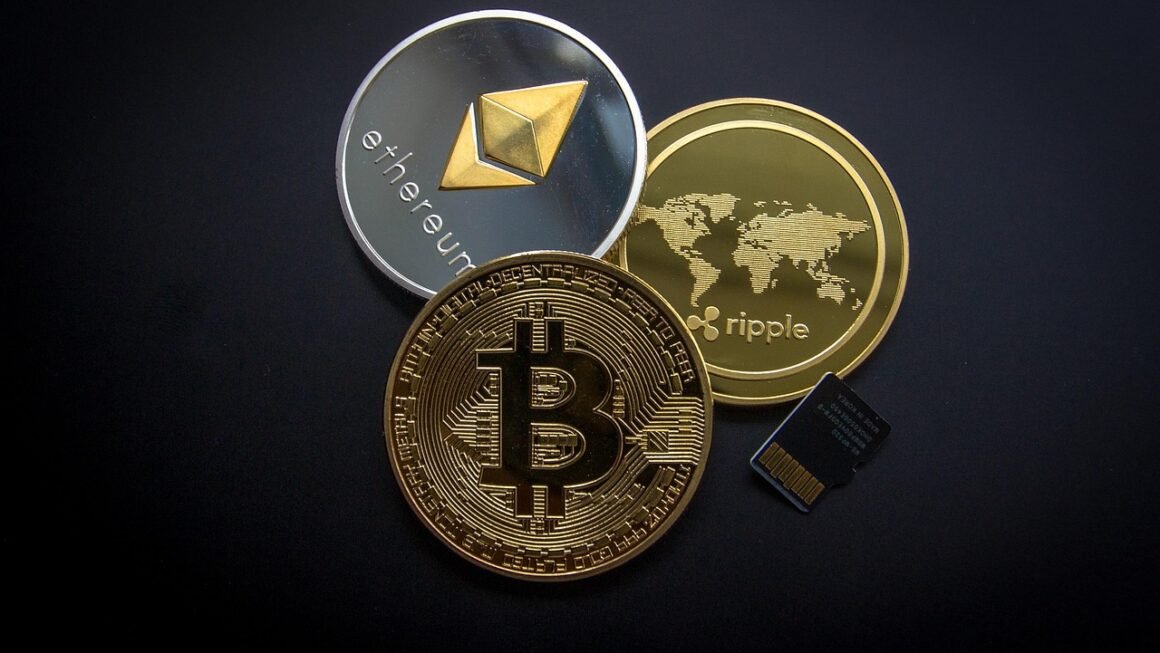Navigating the world of decentralized finance (DeFi) can feel like entering a maze, but at its heart lies a powerful innovation: liquidity pools. These pools are the engine that powers many DeFi applications, enabling seamless trading, lending, and yield farming opportunities. Understanding how they work is crucial for anyone looking to participate in the DeFi revolution. This guide provides a comprehensive overview of liquidity pools, covering their mechanics, benefits, risks, and how to use them effectively.
What are Liquidity Pools?
The Problem Liquidity Pools Solve
Before liquidity pools, decentralized exchanges (DEXs) faced a significant challenge: limited liquidity. Traditional order book-based exchanges rely on market makers to provide buy and sell orders, ensuring smooth trading. DEXs, however, often lacked this mechanism, resulting in high slippage and difficulties executing large trades. Liquidity pools solve this problem by providing a readily available supply of tokens for traders to use.
How Liquidity Pools Function
Liquidity pools are essentially collections of tokens locked in a smart contract. Users, known as liquidity providers (LPs), deposit an equal value of two or more tokens into the pool. In return, they receive LP tokens, which represent their share of the pool.
- The smart contract uses an automated market maker (AMM) algorithm to determine the price of the tokens in the pool.
- Traders can then swap tokens directly from the pool, paying a small fee that is distributed proportionally to the LPs.
- The AMM algorithm ensures that the pool remains balanced, adjusting prices based on the relative supply of each token.
Example: The ETH/DAI Pool
Imagine an ETH/DAI liquidity pool. LPs deposit both ETH and DAI into the pool, maintaining an equal value ratio (e.g., $100 worth of ETH and $100 worth of DAI). When a trader wants to buy ETH with DAI, they pay DAI to the pool. This increases the supply of DAI and decreases the supply of ETH, causing the price of ETH to slightly increase according to the AMM’s algorithm. The trader pays a small transaction fee that is distributed to the LPs.
Benefits of Liquidity Pools
Earning Passive Income
One of the main benefits of becoming an LP is the opportunity to earn passive income. LPs receive a portion of the trading fees generated by the pool, proportional to their share of the total liquidity. This provides a steady stream of income for simply providing tokens to the pool.
- Example: If you own 1% of a liquidity pool and the pool generates $100 in trading fees over a specific period, you would receive $1.
Supporting Decentralized Exchanges
Liquidity pools are essential for the functioning of DEXs. By providing liquidity, LPs help to ensure that traders can execute trades quickly and efficiently. This support contributes to the overall growth and stability of the DeFi ecosystem.
- Increased liquidity reduces slippage for traders.
- DEXs can operate without relying on centralized intermediaries.
- Contributes to a more open and accessible financial system.
Access to New Projects
Many new DeFi projects use liquidity pools as a way to distribute their tokens and bootstrap their ecosystem. By providing liquidity to these pools, LPs can gain early access to promising new projects and potentially earn significant returns.
- Example: A new token might offer increased rewards for providing liquidity in the first few weeks after launch.
Risks of Liquidity Pools
Impermanent Loss
Impermanent loss is one of the biggest risks associated with providing liquidity. It occurs when the price of one token in the pool changes relative to the other. The AMM algorithm adjusts the token ratios to maintain balance, which can result in LPs receiving less value than if they had simply held the tokens in their wallets.
- Impermanent loss is more likely to occur with volatile tokens.
- It’s considered “impermanent” because the loss is only realized when the LP withdraws their tokens. If the price ratios revert, the loss can disappear.
Smart Contract Risk
Liquidity pools are governed by smart contracts, which are susceptible to bugs and exploits. If a smart contract is compromised, LPs could lose their funds.
- Choose liquidity pools from reputable projects with audited smart contracts.
- Diversify your liquidity across multiple pools to reduce risk.
Regulatory Uncertainty
The regulatory landscape surrounding DeFi is still evolving. Changes in regulations could impact the legality and viability of liquidity pools.
- Stay informed about regulatory developments in the DeFi space.
Example of Impermanent Loss:
Assume you deposit 1 ETH and 3000 DAI into a pool where 1 ETH = 3000 DAI. The total value is $6000. If ETH price doubles to 6000 DAI, the pool rebalances. You now might have approximately 2 ETH and 3000 DAI ($15,000). If you had just held the initial amount, you would have $1 ETH and 3000 DAI ($9000 total). The difference ($15000 – $9000 = $6000) is the impermanent loss. You still made a profit, but less than if you had simply held the assets.
How to Participate in Liquidity Pools
Choosing a Platform
Several platforms offer liquidity pools, each with its own set of features and benefits. Some popular platforms include:
- Uniswap: One of the most well-known DEXs, offering a wide range of liquidity pools.
- SushiSwap: An alternative DEX with innovative features like yield farming and governance tokens.
- PancakeSwap: A popular DEX on the Binance Smart Chain, known for its low fees and high yields.
- Balancer: A flexible AMM that allows for pools with more than two tokens and custom weightings.
Selecting a Liquidity Pool
When selecting a liquidity pool, consider the following factors:
- Trading Volume: Pools with higher trading volume tend to generate more fees.
- Annual Percentage Yield (APY): The APY represents the estimated annual return on your investment.
- Impermanent Loss Risk: Assess the volatility of the tokens in the pool to estimate the risk of impermanent loss.
- Smart Contract Security: Check if the pool’s smart contract has been audited by a reputable firm.
Adding and Removing Liquidity
To add liquidity to a pool, you will need an appropriate web3 wallet (e.g., MetaMask, Trust Wallet) and the required tokens.
To remove liquidity, simply redeem your LP tokens for the underlying tokens.
Strategies for Managing Liquidity Pool Risks
Diversification
Diversify your liquidity across multiple pools to reduce the risk of impermanent loss and smart contract vulnerabilities. Spreading your investments across different pools can help mitigate the impact of a single pool performing poorly or being compromised.
Hedging
Consider hedging your positions to protect against impermanent loss. This can involve taking out short positions in the underlying tokens or using derivatives to offset potential losses.
Staking LP Tokens
Some DeFi platforms allow you to stake your LP tokens to earn additional rewards. This can help to offset the risk of impermanent loss and increase your overall returns.
Monitoring Pool Performance
Regularly monitor the performance of your liquidity pools to identify potential problems. Track the trading volume, APY, and impermanent loss to make informed decisions about whether to stay in or exit a pool.
Conclusion
Liquidity pools are a fundamental component of the DeFi ecosystem, enabling decentralized trading, lending, and other financial applications. While they offer the potential for earning passive income and supporting innovative projects, they also come with risks, including impermanent loss and smart contract vulnerabilities. By understanding the mechanics of liquidity pools and implementing risk management strategies, you can participate in this exciting space while minimizing your exposure to potential losses. As DeFi continues to evolve, staying informed and adapting your strategies will be key to success in the world of liquidity provision.



